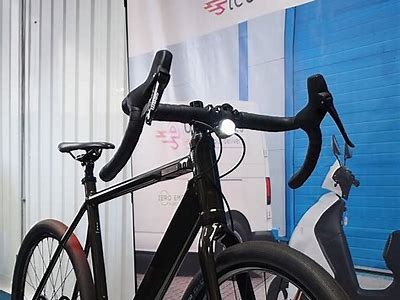Innovative Printable Solar Cells: Revolutionizing Renewable Energy Technology for the Future
Introduction
The ongoing quest for sustainable and efficient energy solutions has led researchers to explore innovative technologies in renewable energy. Among these advancements, printable solar cells have emerged as a groundbreaking solution, combining efficiency, affordability, and versatility. This article delves into the mechanics, benefits, and future potential of printable solar cells, aiming to provide a comprehensive overview of how they're set to revolutionize the energy landscape.

The Mechanics of Printable Solar Cells
Printable solar cells leverage advanced materials such as organic photovoltaics (OPVs) and perovskite solar cells. These materials can be manufactured using printing techniques similar to those used in traditional printing. The core components of printable solar cells include a conductive substrate, light-absorbing layer, and charge-collecting electrodes. By employing roll-to-roll printing technology, manufacturers can produce solar cells on flexible substrates, making them lighter and easier to deploy compared to conventional solar panels.

Advantages of Printable Solar Cells
One of the most significant advantages of printable solar cells is their potential for cost reduction. Traditional solar panels often rely on expensive materials and complicated manufacturing processes. In contrast, printable solar cells can be produced using low-cost materials and less energy-intensive methods. This can lead to a decrease in the overall cost of solar energy generation.

Moreover, the flexibility of printable solar cells allows them to be integrated into a variety of surfaces, from building materials to clothing. This adaptability opens new avenues for solar energy utilization, transforming previously non-usable spaces into energy-generating surfaces.

Environmental Impact
Leading the charge towards a greener future, printable solar cells boast a smaller environmental footprint compared to traditional solar technology. The production of these cells requires fewer hazardous materials and less energy, aligning with global sustainability goals. Furthermore, their lightweight nature reduces the structural burden on building materials, promoting energy-efficient architectural design.

Performance and Efficiency
Efficiency is a critical factor in the adoption of any solar technology. While printable solar cells historically lagged behind their crystalline counterparts in efficiency, ongoing research has yielded significant improvements. Innovations in material science have led to the development of printable solar cells with efficiencies exceeding 20%. This progress levels the playing field, positioning printable solar technology as a viable competitor in the renewable energy market.
Applications of Printable Solar Cells
The applications of printable solar cells are vast and promising. They can be used in urban environments, integrated into building facades or windows, and even utilized in wearable technology. Additionally, printable solar cells are ideal for off-grid applications, providing energy in remote locations where traditional energy infrastructure is impractical.
In the automotive industry, printable solar cells can be embedded into vehicle surfaces, providing auxiliary power to enhance energy efficiency. Such applications demonstrate how this technology can be woven into the fabric of everyday life, promoting a culture of sustainability.
Challenges and Limitations
Despite their many advantages, printable solar cells face challenges that must be addressed for widespread adoption. Durability remains a concern, as these cells can be more susceptible to environmental factors compared to traditional technologies. Researchers are focused on developing protective coatings and encapsulation techniques that enhance the longevity of printable solar cells while maintaining their lightweight and flexible properties.
Another challenge is achieving large-scale production without compromising quality. While printing technologies offer scalability, ensuring consistent performance across mass-produced units is critical to building consumer trust and market acceptance.
The Future of Printable Solar Cells
Looking ahead, printable solar cells hold the potential to redefine the renewable energy landscape. As technology advances, the integration of artificial intelligence and machine learning in the manufacturing process may lead to further enhancements in efficiency and cost-effectiveness. Moreover, public and private investments in research and development are likely to catalyze innovation in this field.
In conclusion, printable solar cells represent a paradigm shift in renewable energy technology. Their ability to combine affordability, flexibility, and efficiency positions them at the forefront of the transition towards a sustainable future. As challenges are addressed and technology continues to evolve, printable solar cells could play a pivotal role in mitigating climate change and advancing global energy sustainability.
Conclusion
In summary, the innovative journey of printable solar cells is just beginning. As we stand on the brink of a renewable energy revolution, embracing such technologies represents not just an opportunity for energy independence, but also a commitment to a cleaner, greener planet. ```
 WillBet: Elevate Your Betting Experience
WillBet: Elevate Your Betting Experience